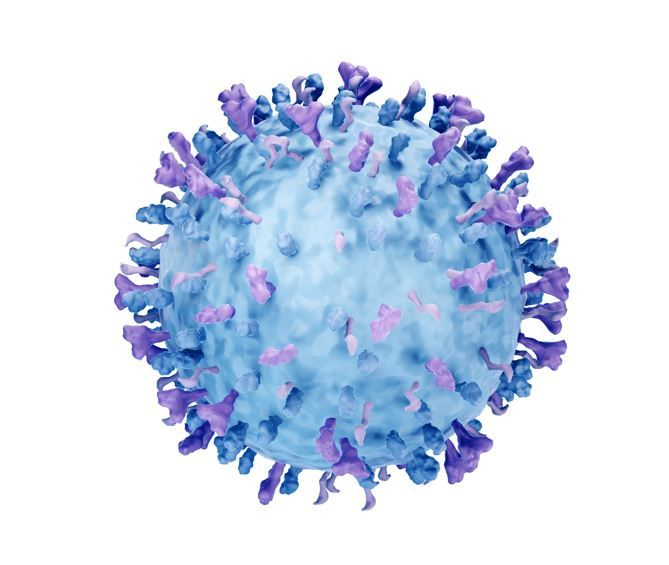- Clinical Technology
- Adult Immunization
- Hepatology
- Pediatric Immunization
- Screening
- Psychiatry
- Allergy
- Women's Health
- Cardiology
- Pediatrics
- Dermatology
- Endocrinology
- Pain Management
- Gastroenterology
- Infectious Disease
- Obesity Medicine
- Rheumatology
- Nephrology
- Neurology
- Pulmonology
Use of Multiple Specimen Types in RSV Testing May Improve Detection Rates, Suggests New Review and Meta-analysis
Adding paired serology and sputum to nasal swab/nasopharyngeal swabs RT-PCR increased RSV detection by 50% to 66% on average, respectively.

Respiratory syncytial virus (RSV) detection rates associated with singleplex real-time polymerase chain reaction (RT-PCR) testing may improve with the use of multiple specimen types, suggests results of a systematic review and meta-analysis.
The addition of specimen types such as paired serology and sputum to nasal swab/nasopharyngeal swabs (NPS) RT-PCR increased RSV detection by 50% to 66% on average, respectively, according to findings published in The Journal of Infectious Diseases.
“Accurate diagnostic methodologies are critical for determining RSV disease burden, public health impact of preventative interventions (including vaccines), and generating accurate economic models,” wrote researchers. “With multiple RSV vaccine candidates currently under development, the estimation of population level effects will rely heavily on an accurate diagnosis of infected persons.”
Investigators conducted a systematic literature review and meta-analysis to quantify specimen and diagnostic testing-based underascertainment of adult RSV infection. “This quantification could allow adjustment of clinical burden estimates for diagnostic testing-related underascertainment and thus better estimate the true burden of disease,” wrote authors.
The research team searched publication databases from January 2000 through December 2021 for studies including adults using/comparing more than 1 RSV testing approach. A total of 154 studies met inclusion criteria, and enrolled patients included those with lower or upper respiratory tract infections or exacerbation of an underlying cardiac or pulmonary disease. When reported (59 studies), study participants were more frequently hospitalized patients (66%).
Among all studies included, the most common upper respiratory samples were NPS (102 studies), followed by nasopharyngeal aspirate (NPA, 48 studies) and oropharyngeal swab (OPS, 36 studies). The most frequently used diagnostic approach was RT-PCR, with 68.5% (113 studies) of studies using multiplex platforms and 15.8% (26 studies) using singleplex platforms, according to the study.
Findings
According to the results, compared to RT-PCR, other methods were less sensitive: rapid antigen detection test (RADT; pooled sensitivity, 64%), direct fluorescent antibody (DFA; 83%), and viral culture (86%). Compared to singleplex PCR, investigators observed that multiplex PCR's sensitivity was lower (93%).
Compared to nasal/NPS RT-PCR alone, adding sputum RT-PCR increased the rate of RSV detection by 52% (detection rate ratio [DRR] 1.52, 95% CI 1.15-2.01) and the addition of OPS RT-PCR increased the rate by 28% (DRR 1.28, 95% CI 1.11-1.49). The addition of paired serology testing increased the rate of detection by 42% (DRR 1.42, 95% CI 1.19-1.70) when compared with rates observed with NPS RT-PCR alone.
“Our review indicates that, while RT-PCR using NPS is the most sensitive currently available diagnostic methodology, the addition of other testing approaches—including collection of different specimens and potentially use of serology—substantially boosts RSV detection and these results should be considered when estimating disease burden and the subsequent economic value of RSV immunization of adults,” wrote the research team.
Sensitivity was lower in estimates limited to only adults (for RADT, DFA, and viral culture), and detection rate increases were largely comparable, according to the results.
“To our knowledge, this is the first systematic review that quantifies the underascertainment of RSV infection associated with diagnostic testing and specimen collection approach,” wrote study authors. “Additional research on synergistic effects of using multiple specimens could further inform this issue and lead to more accurate disease burden estimates and economic models, for example by adding a multiplier to adjust published RSV lower respiratory tract infection incidence estimates,” they concluded.
Reference: Onwuchekwa C, Moreo LM, Menon S, et al. Under-ascertainment of respiratory syncytial virus infection in adults due to diagnostic testing limitations: A systematic literature review and meta-analysis. J Infect Dis. Published online January 20, 2023. doi:10.1093/infdis/jiad012.
